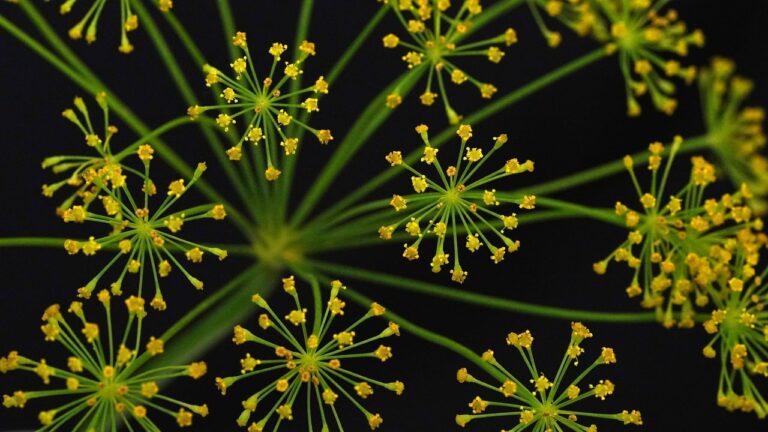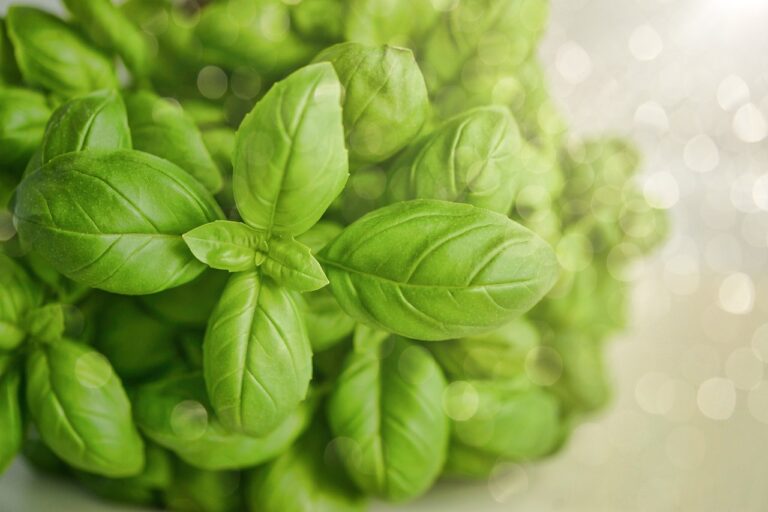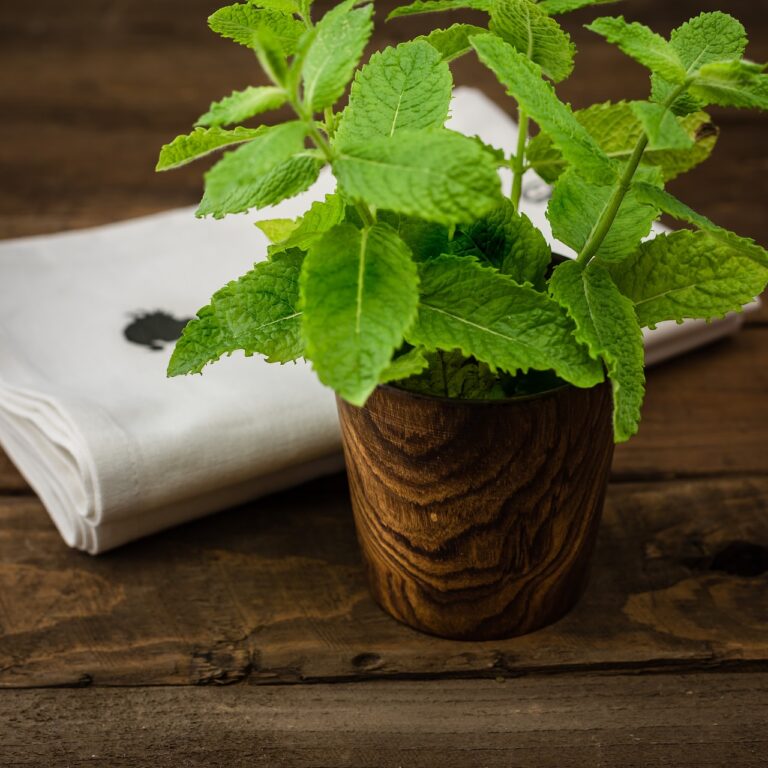Exploring the Differences and Uses of Rosemary and Thyme
Are you curious about the distinct qualities and versatile applications of rosemary and thyme? Look no further! This article delves into the origins, appearances, flavors, and nutritional benefits of these aromatic herbs. Discover their medicinal uses, tips on growing and harvesting, as well as efficient storage methods. Learn how to pair them with other ingredients and find inspiration in delectable recipes. Get ready to elevate your culinary creations and enjoy the benefits of these remarkable herbs.
Origins of Rosemary and Thyme
The origins of rosemary and thyme can be traced back to the Mediterranean region, where they have been cultivated and used for centuries. These aromatic herbs have a rich history and are cherished for their culinary and medicinal properties. Rosemary, with its needle-like leaves and strong fragrance, adds a delightful flavor to dishes like roasted meats, soups, and sauces. It is also known for its antioxidant and anti-inflammatory properties, making it a popular choice for herbal remedies. Thyme, on the other hand, boasts small, delicate leaves and a slightly minty taste. It is commonly used in Mediterranean and Middle Eastern cuisines, lending its distinct flavor to roasted vegetables, stews, and marinades. Thyme is also renowned for its antiseptic and expectorant qualities, making it a staple in natural remedies for coughs and colds. So next time you're cooking or seeking natural remedies, don't forget to reach for the aromatic wonders of rosemary and thyme!
Appearance and Aroma
As you explore the differences and uses of rosemary and thyme, you'll notice that their appearance and aroma play a significant role in their culinary and medicinal applications. Rosemary, with its long, needle-like leaves, resembles a miniature pine tree and has a vibrant, deep green color. Its aroma is woody and earthy, reminiscent of pine and camphor. Thyme, on the other hand, features small, oval-shaped leaves that grow in clusters. Its color can range from light green to grayish-green. Thyme's aroma is distinct and fragrant, with notes of lemon, mint, and warmth. In cooking, rosemary's bold flavor pairs well with roasted meats and potatoes, while thyme's delicate and versatile taste complements various dishes, including soups, stews, and marinades. Medicinally, both herbs are believed to have antimicrobial and antioxidant properties, making them valuable additions to herbal remedies and teas.
Flavor Profiles
Now let's delve into the flavor profiles of rosemary and thyme, and discover how they contribute to the culinary experience. Rosemary is known for its bold and earthy flavor, with hints of pine and citrus. It adds a distinctive taste to dishes, enhancing the overall depth and complexity. Thyme, on the other hand, offers a more subtle and delicate flavor, with a slightly minty and lemony undertone. It provides a refreshing and aromatic quality to food. Both herbs have their unique characteristics and can be used in a variety of dishes. Rosemary pairs well with meats, potatoes, and roasted vegetables, while thyme complements poultry, soups, and sauces. Understanding the flavor profiles of rosemary and thyme allows you to elevate your cooking and create dishes that are flavorful and memorable.
Nutritional Benefits
To fully understand the nutritional benefits of rosemary and thyme, it is important for you to know how these herbs can contribute to your overall health and well-being. Both rosemary and thyme are packed with essential vitamins, minerals, and antioxidants that can boost your immune system and support your body's natural processes. Rosemary is rich in vitamin C, which helps in collagen production and strengthens your immune system. Thyme, on the other hand, is a great source of vitamin K, which promotes bone health and proper blood clotting. These herbs also contain powerful antioxidants that protect your cells from damage caused by free radicals. Incorporating rosemary and thyme into your diet can enhance the nutritional value of your meals and provide numerous health benefits.
Medicinal Uses
You can benefit from the medicinal uses of rosemary and thyme through their ability to alleviate various health conditions. Both herbs have been used for centuries in traditional medicine for their healing properties. Rosemary is known for its anti-inflammatory and antioxidant effects, making it beneficial for improving digestion, reducing muscle pain, and boosting cognitive function. Thyme, on the other hand, has powerful antibacterial and antifungal properties that can help with respiratory issues like coughs, bronchitis, and sinus infections. It is also commonly used to relieve sore throat and promote oral health. To reap the medicinal benefits of rosemary and thyme, you can make herbal teas, use them in cooking, or even apply essential oils topically for aromatherapy. Remember to consult with a healthcare professional before using them as a treatment for any specific health condition.
Culinary Uses
When cooking with rosemary and thyme, you can enhance the flavors of your dishes by incorporating these herbs into your recipes. Rosemary and thyme are both versatile herbs that add depth and aroma to a wide range of dishes. Rosemary has a pungent, pine-like flavor that pairs well with meats and roasted vegetables. It can be used to season lamb, chicken, or even potatoes. Thyme, on the other hand, has a slightly sweet and earthy taste that complements soups, stews, and sauces. It is often used in Mediterranean and French cuisines. Both herbs can be used fresh or dried, but the flavors of fresh rosemary and thyme are more pronounced. So next time you're in the kitchen, don't forget to add a sprinkle of rosemary or thyme to elevate the flavors of your dishes.
Growing and Harvesting Tips
One important aspect of growing and harvesting rosemary and thyme is ensuring proper care and maintenance throughout their growth cycle. To start, choose a sunny location with well-draining soil. Both herbs prefer slightly alkaline soil, so consider adding lime if necessary. When planting, space rosemary and thyme plants about 18 inches apart to allow for proper airflow and prevent disease. Water the plants regularly, but be careful not to overwater, as they prefer drier conditions. Prune the herbs regularly to encourage bushier growth and to prevent them from becoming leggy. When harvesting, simply snip off the desired amount of leaves or sprigs, making sure to leave enough for the plant to continue growing. Remember, fresh herbs have the best flavor, so use them immediately or dry them for future use.
Storage and Preservation Methods
To ensure the long-term availability of your freshly harvested rosemary and thyme, proper storage and preservation methods are essential. These herbs have a vibrant flavor and aroma that can enhance any dish, but they can lose their potency if not stored correctly. After harvesting, gently wash the herbs and pat them dry with a paper towel. The next step is to remove any excess moisture by air-drying or using a dehydrator. Once the herbs are completely dry, store them in airtight containers, away from direct sunlight and heat. Mason jars or resealable bags work well for this purpose. Remember to label the containers with the herb's name and date of harvest. When stored properly, your rosemary and thyme can last for up to one year, ensuring you have a constant supply of flavorful herbs for your culinary endeavors.
Pairing With Other Ingredients
To enhance the flavors of your culinary creations, it is important to consider the ideal pairings for your freshly harvested rosemary and thyme with other ingredients. These versatile herbs can elevate the taste of various dishes when combined with compatible flavors. Rosemary pairs well with roasted meats, potatoes, and vegetables, adding a fragrant and pine-like aroma. Its strong flavor can also enhance marinades, stews, and soups. Thyme, on the other hand, complements poultry, seafood, and tomato-based dishes. Its earthy and slightly minty taste brings depth and complexity to sauces, dressings, and stuffing. Additionally, both rosemary and thyme can be combined to create a harmonious blend of flavors. Remember to use these herbs sparingly, as their potency can easily overpower other ingredients. With thoughtful pairings, your dishes will be infused with a delightful burst of herbaceous goodness.
Recipes and Inspirations
To further explore the culinary potential of rosemary and thyme, let's delve into some tantalizing recipes and inspirations. Rosemary and thyme are versatile herbs that can enhance the flavors of various dishes. For a simple yet delicious appetizer, try making rosemary and thyme-infused olive oil. Combine fresh herbs with olive oil, let it infuse for a few days, and use it to drizzle over salads or dip crusty bread into. If you're looking for a hearty main course, try a roasted chicken with rosemary and thyme. Rub the chicken with a mixture of minced herbs, garlic, and olive oil, then roast it until golden and fragrant. The herbs will infuse the meat with a wonderful aroma and taste. Lastly, for a refreshing beverage, make a thyme-infused lemonade. Boil thyme sprigs with sugar and water, then mix in freshly squeezed lemon juice. Serve it chilled, and enjoy a zesty and herbaceous drink. With these recipes and inspirations, you can impress your guests with the delightful flavors of rosemary and thyme.
Conclusion
In conclusion, rosemary and thyme are both versatile herbs with unique flavors and aromas that can enhance a variety of dishes. They have different origins, appearances, and nutritional benefits, but can be used interchangeably in many recipes. Both herbs also have medicinal properties and can be grown and harvested easily. With proper storage and preservation methods, they can be enjoyed for a long time. Whether you're a seasoned chef or a beginner cook, incorporating rosemary and thyme into your cooking will surely elevate your dishes to new heights.






